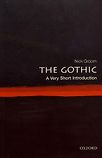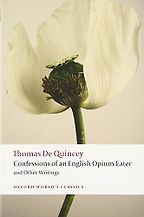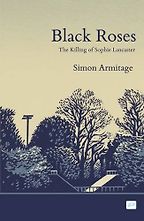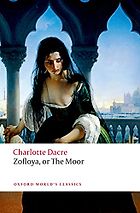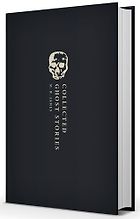What is ‘the Gothic’?
The Gothic has been a term of cultural, social and political description for centuries. It was well established before the Gothic novel emerged in 1764.
So we should really be telling the story of the Gothic from the very beginning: from the fall of the Roman Empire and the Gothic tribes. We need to understand how the Goths were contrasted by Renaissance commentators with classical architects and artists—which is why medieval architecture is today still called Gothic architecture.
These older motifs, figures, and images were taken up by writers such as William Shakespeare and John Milton. They created the context for the seventeenth- and eighteenth-century Gothic, which connected with national identity, and later with Parliamentarian and Protestant politics.
The Gothic then became the foundation of the Whig theory of history, which highlights progress, extending the franchise, and building a commercial economy. But at the heart of this way of perceiving political and national identity is the horror that progress is only possible through terrible costs: through executions, cruelty, martyrdoms, and oppression.
What we now call the Gothic novel of the late eighteenth and nineteenth century is part of this wider political context. Most contemporary Gothic literary criticism takes 1764 as its starting point with Horace Walpole’s novel The Castle of Otranto, and then tends to peter out with Bram Stoker’s Dracula in 1897. So many critics take its heyday as occurring with writers such as Walpole, Ann Radcliffe, and Mary Shelley.
But neither should we end the story at the beginning of the twentieth century. We should think about horror films, the American Gothic, and popular Gothic culture. Indeed, the Goth subculture—music, fashion and art—has had remarkable longevity.
I’m not suggesting that to be someone who enjoys Goth music today you have to know its history. But I think it deserves our attention that the same term is used in different contexts: from medieval architecture to winklepicker shoes!
In other words, I’m interested in seeing what light the Gothic can cast on literature and other forms of cultural expression, and what it can tell us about our identities today.
As you describe in your Very Short Introduction, the Gothic is obsessed with the Catholic past—as we can see in Matthew Lewis’s The Monk, and Ann Radcliffe’s The Italian. How did English politics square its obsession with the Catholic past and its creation of a new Whig identity in the Gothic?
Ann Radcliffe puts her finger on that in her essay ‘On the Supernatural in Poetry’, published posthumously in 1826. In this essay, she suggests that all the ghosts in the recent English literary tradition have their origin in the ghost of Hamlet’s father.
Why is Hamlet’s father such a problematic ghost? Because it’s a Catholic ghost in a Protestant tradition. Protestantism runs deep throughout Hamlet—Hamlet studied at Wittenberg, for example. The ghost expresses Protestant anxiety over the Reformation.
Protestantism is more democratic than Catholicism—it is not exactly rational, but it enlists scientific developments. It razes the priories and abbeys. And yet it can only account for so much: ‘There are more things in heaven and earth, Horatio, / Than are dreamt of in your philosophy’, Hamlet says. Something else is going on. There are dreams; we are haunted. But where are we haunted from?
Shakespeare has more ghosts in his plays than any other dramatist of the period. This eeriness of English identity, this unaccommodated excess, this fascination with folklore and the supernatural, is something that lies outside of the later Whiggish, progressive, commercial, increasingly rational philosophy. We can’t all be summed up with these simple frameworks. ‘I could be bounded in a nutshell . . . were it not that I have bad dreams’, as Hamlet says.
“‘There are more things in heaven and earth, Horatio, / Than are dreamt of in your philosophy.’”
And this anxiety continues, I think, up to the present day. You find it, for example, in a film like The Exorcist. This is William Blatty’s 1973 reinvention of the Gothic for American movie audiences. The mother in the film wants Regan—her daughter who is experiencing a psychological trauma—to be cured whatever the cost. They go to clinicians and psychiatrists. The mother doesn’t believe in Catholicism, but she ends up turning to an exorcist from the Catholic church.
In general, Catholicism in the English imagination is the dead body that refuses to lie down: it’s there and it keeps coming back. And that’s the nature of haunting—you can’t escape the past. The past’s shadows will keep coming back and troubling you, reminding you that understanding can only ever be partial.
What desires and fears do you think modern Gothic responds to?
I think modern Gothic responds to a question of identity. Who am I? Who are we? In what almost amounts to an identity or personality crisis, people feel that the conceptual frameworks and discourses—legal, psychiatric, medical, and so forth—that govern and influence our behaviour only tell part of the story.
There is so much Gothic writing and film that is concerned with questions of who we are, where we come from, and where we’re going. These are deeply personal but also shared and communal anxieties.
The enigma of human identity isn’t going to be simply solved. Artificial intelligence is now on the agenda as a major contemporary anxiety. The Gothic provides not only a tradition, but a way of thinking that helps us consider those troubling or ineffable, elusive and often intangible questions—questions that can’t simply be solved through practical science or rationality.
Your first book recommendation is Charlotte Dacre’s Zofloya; Or, The Moor, from 1806. Why is this book Gothic?
The term ‘Gothic novel’ didn’t come into being until the end of the nineteenth century. It was popularized at the beginning of the twentieth century.
However, Ann Radcliffe can be described retrospectively as using Gothic trappings in her novels. Radcliffe—who was by far the best-selling, best-paid author of the 1790s—popularized the ‘explained supernatural’. This occurs when terrifying and apparently supernatural incidents are all—like in Scooby-Doo—eventually explained as occurring through various mechanisms, instruments, or accidents.
In Radcliffe, it is suggestion that gets the mind working to create a sense of infinity, or of ‘the sublime’ (as Edmund Burke describes it). The mind’s encounter with an image it cannot comprehend is a heightening experience, but one which also annihilates the self. This was a favourite aesthetic effect of the late eighteenth century.
By contrast, Matthew Lewis’s The Monk is a revolting novel about power, corruption, brutality, rape, torture, murder, and black magic. Here, the supernatural has a powerful grip on human experience: magic, enchantment, and spells form the fabric of this novel.
Women writers of this period are therefore usually associated with Radcliffe and the explained supernatural. But Charlotte Dacre is the opposite: she positions herself in the Lewisian horror tradition by writing a novel about murderous and vile Venetians, and their attempts to slake their almost bestial lusts.
Get the weekly Five Books newsletter
In Zofloya, the central character—Victoria—ends up forming a pact with a mysterious, exotic, Orientalized figure—the Moor—who provides the means by which she can seduce one of the characters and then murder her husband.
I find this book fascinating. It’s a novel written by a woman full of nasty female characters and problematic mother-daughter relationships, in which women kill other women. It’s highly unusual. Readers at the time were horrified.
It has been difficult to fit this novel into conventional accounts of the Gothic because it doesn’t align with Radcliffe or Mary Shelley, and certainly not with Jane Austen, who was writing at almost exactly the same time. It shows untrammeled desires and lusts that seem out of place in feminist critical constructions of the canon of women writers.
It’s an outsider text that challenges categories—something the Gothic characteristically does—through the supernatural, violence, and sensationalism. It’s a hallucinatory novel, which uses dreams and dream worlds. When it was written, dreams were increasingly seen as portentous, or somehow key to the mysteries of one’s own identity.
In the novel, you’re never certain what is a dream. Is Zofloya actually a projection of Victoria? You’re never sure. Although he is literally diabolical, he may simply be a manifestation of her morbid sexual desire.
I would compare Zofloya to Angela Carter’s The Bloody Chamber. The title story of this work, ‘The Bloody Chamber’, is based on Bluebeard’s castle and is—to me—Carter’s invitation to female readers to embrace much more violent and transgressive sexual fantasies than are commonly accepted. In other words, it offers women permission to see themselves as victims in sadomasochistic games and posits that this itself could be thrilling.
Carter wrote a very interesting book about the Marquis de Sade—The Sadeian Woman—which is about how sexual fantasies can be liberating for women. She says that these tales are not just about victimization, oppression, and patriarchal tyranny; rather, she argues that we have to be a lot more sophisticated in our ways of thinking about fantasy. And Dacre is doing something similar.
Would you say that Frankenstein is the most famous Gothic novel of all time?
If so, then it’s up against some pretty stiff opposition, such as Robert Louis Stevenson’s Strange Case of Dr Jekyll and Mr Hyde and Bram Stoker’s Dracula. All three are global phenomena. This is partly to do with the popularity of their many film adaptations. However, I’d recommend reading all three in book form.
For a Gothic novel, Frankenstein is surprisingly non-supernatural: there are no ghosts, demons, or witches. There isn’t really any magic.
What there is, is cutting-edge science: Mary Shelley attended lectures by the chemist Humphry Davy; Frankenstein was published in the same year as the first treatise on blood transfusion; and Percy Shelley studied anatomy for a term, after he was sent down from Oxford.
Frankenstein can be seen as an experiment—or almost a laboratory—that brings together science and literature. It makes us think seriously about science, but through the medium of literature.
This is partly why Frankenstein is very much a novel for the twenty-first century. Mary Shelley was trying to push the boundaries of science and technology. The details of the science have changed, but the big questions remain as important for us today as they were for her. We’re still dealing with similar questions regarding artificial intelligence, transplantation, vivisection, medical ethics, and genetic engineering.
“Frankenstein can be seen as an experiment—or almost a laboratory—that brings together science and literature.”
Frankenstein asks us to come to terms with the cost of scientific progress. It asks us to question whether scientific progress is worth experimentation on animals, experimentation on humans, the possible creation of life-forms that haven’t hitherto existed, and how we can develop notions of responsibility towards the unknown and inconceivable.
Thinking further about Frankenstein as a novel for the twenty-first century, does it have interesting things to say about the environment?
Yes, it does. It gets us to think about the relationship of humans to the environment. In other words: is our environmental thinking to be centered on the human? Is it anthropocentric? Frankenstein is really a novel for the Anthropocene—the idea that humans have fundamentally changed the environment, and that we are now having to live with the consequences.
Don’t forget that Frankenstein was inspired by a trip that Mary Shelley took to the shores of Lake Geneva in the summer of 1816—the year without a summer. There had been a gigantic volcanic explosion the year before, which had sent ash hundreds of miles into the atmosphere. It blotted out the sunlight, and led to a decade of extreme weather conditions.
Going to Switzerland, there were still dark and stormy nights, and Shelley and her companions watched thunderstorms across the lake. Byron, with whom they were staying, wrote an ecological catastrophe poem called ‘Darkness’, which is about the death of all things on Earth. In a sense, it’s a forerunner of Cormac McCarthy’s The Road, as an extremely bleak vision of future environmental catastrophe.
The ‘being’ in the novel wants to have a mate. Incidentally, I don’t call him a ‘monster’, or even a ‘creature’. I call him a ‘being’ to draw attention to his relationship to the human beings in the novel. Although he’s not quite human, he nearly is: he’s sentient and intelligent; he can speak, read and write. He’s eloquent and erudite: he knows Milton’s Paradise Lost, for example.
The being wants to have a she-being. He doesn’t want to be an oddity—a singular monster. He wants to be part of a species—to be accommodated within a taxonomy of natural history. He says that he’s going to go off to live in the Amazon with his mate—a sort of Adam and Eve beginning.
Victor starts making a she-being, and then destroys the semi-created figure. The reason he gives is that he doesn’t want to risk propagating what he calls a ‘race of devils’ across the earth. He sees a threat, because the being is an immensely strong, quick-witted humanoid. What would stop his progeny from rebelling against the humans, and competing with them? There’s a sense here of unleashing unknown dangers on the environment.
Could Frankenstein be described as an ecogothic novel?
‘Ecogothic’ is a term that has gained currency in recent criticism. It’s about how the Gothic becomes entwined with ecological thinking. Much of the state-of-the-art thinking that’s happening in ‘Gothic Studies’ at the moment is concerned with what’s called ‘speculative realism’, or ‘object-oriented ontology’. This thinking suggests that Gothic novels can be read in ways that displace the human from the heart of things, and create ways of thinking about the world that are non-anthropocentric.
You get this in Frankenstein. When Victor and his family are travelling through the Swiss Alps, there’s an idea that they’re among the ‘habitations of another race of beings’—of a race that has been hitherto overlooked. There’s a strong sense that they’re not alone: that they are part of a vibrant–but also potentially dangerous – ecosystem that is always competing and fighting, and always in danger of collapsing.
“Frankenstein is really a novel for the Anthropocene—the idea that humans have fundamentally changed the environment, and that we are now having to live with the consequences.”
There’s also a lot of recent ecological thinking that considers human beings as ecosystems themselves. In other words, we don’t have a sole human integrity: we are made up of bacteria in the gut, and of fungi and viruses. We are ourselves walking ecosystems.
This is just like the being in Frankenstein. He is a hybrid, not just of human bits and pieces, but also of animal. His body parts have been taken from abattoirs and slaughter-houses as well as from graveyards and charnel houses.
In this sense, the being is representative of a much broader conception of life and vitality. He moves as an ecosystem, or as many beings. He’s rather like the man in the Gadarene swine episode in the New Testament, who is composed of devils and whose name is Legion.
Why did you choose Thomas De Quincey’s Confessions of an English Opium Eater, from 1821?
Thomas De Quincey tends to get overshadowed by his contemporaries: the great Romantic poets and novelists. Yes, he was on the sidelines, although he knew William Wordsworth and Samuel Taylor Coleridge intimately, and was a great journalist and reporter on their activities.
De Quincey tried to make the Gothic very contemporary. He used Gothic motifs, and was interested in architecture and in the elements of the sublime that Burke described, such as music.
But he didn’t write about the supernatural. Rather, he portrayed the Gothic as a symbol for opium: a medicine to people who aren’t sick, a leisure activity, a food that doesn’t provide any sustenance. As De Quincey writes about it, the Gothic is a gateway into sublime experiences, to the infinite capacities and possibilities of one’s own mind, memories, and imagination.
Like Dacre, he was fascinated by dreams. He tried to come up with an architecture or a theory of dreaming, which he then expressed through Gothic language. He was interested in inner space, and how this could illuminate one’s personality.
People say that he anticipates Sigmund Freud but it’s the other way around: Freud is influenced by De Quincey. De Quincey sees the mind as a palimpsest, as a writing tablet that one writes over and over again but which carries the traces of earlier experiences and memories. He talks about dreams being ‘involutes’, by which he means a collection of apparently random and unconnected elements, like a heraldic shield, that can then be decoded to lay bare the elements of one’s personality.
“As De Quincey writes about it, the Gothic is a gateway into sublime experiences, to the infinite capacities and possibilities of one’s own mind, memories, and imagination.”
He sees dreams as offering a glimpse of the infinite and the sublime. He describes going down into the abyss—the feeling you might get at the bottom of an ocean—or climbing up the infinite number of stairs of some Gothic tower. While Radcliffe had described labyrinthine passages under castles, De Quincey makes psychological use of this motif.
In the Confessions of an English Opium Eater, you can’t always distinguish the dreaming passages from the more mundane accounts of his life. This is what makes the book so enticing, I think—it evokes the sort of feelings that Freud later calls ‘uncanny’. You go back to a house of which you have a very strong memory, and it turns out that it is no longer there. Is this because it has disappeared through some sort of strange science, or is it because your memory is faulty?
None of us like to admit to having a faulty memory, so it becomes very troubling when one’s memory doesn’t fit with one’s later experience. De Quincey is very alert to those disturbances. Our identity isn’t as cohesive as we would like it to be: it contains all sorts of gaps and dislocations.
Did De Quincey have a significant influence on the development of the Gothic?
Yes, he influenced later writers such as Edgar Allan Poe, Charles Baudelaire, and H.P. Lovecraft.
He was also notable for his Gothicization of the city. He was one of the first Gothic writers to think less about castles and more about the winding streets of the city. This is the beginning of the idea that you can make a story by drifting anonymously through a city, and looking at people as if they were objects or spectacles to be consumed.
The Gothic city has secrets: it’s a place that isn’t just a commercial centre, but is sinister, frightening, and full of crime. You can see that Gothicization taken up by Charles Dickens, but also by Bram Stoker in Dracula, and Richard Marsh in The Beetle.
Shall we move on to M R James’s Ghost Stories of an Antiquary (1904)? I have to confess I couldn’t re-read this because I find him so frightening.
Well, actually, I can barely read these stories myself. It’s the only literature that gives me nightmares. This collection was read to me by a teacher at school when I was eight years old, on dark autumnal Friday afternoons. I re-read them as an undergraduate, and was absolutely terrified once again.
While the Gothic novel gained momentum through the nineteenth century with a fascination with vampires and werewolves, M R James is rather different. He was steeped in the apocryphal lore of the Bible. He also collected and translated medieval ghost stories from the monk of Byland Abbey—the first English ghost stories that we have on record. He was an extraordinarily erudite scholar.
He combines that with a theme that is also central to Frankenstein: forbidden knowledge. The nineteenth century saw a pursuit of knowledge in all its forms: there was an obsession with collecting and categorizing, and with taxonomies. There was a proliferation of new sciences, and a huge enthusiasm for theories that purported to explain the working of history in the world. Karl Marx and Charles Darwin both offered grand explanatory narratives, and Sigmund Freud was getting going with psychoanalysis.
James makes the subtlest of challenges to these grand theories, with his short stories. In them, there’s the sense that however much you try to make sense of the world and order it, there are still things that can’t be explained. It’s like a flickering, and then a crack appears, and then the whole edifice threatens to fall down.
James often deals with researchers, or people who pry just a bit too deeply into things that they shouldn’t. Anybody who has been drawn to a ruined church or building—knowing that they shouldn’t, but feeling at the same time an irresistible pull—will be able to relate to this. There’s an almost vertiginous sense with James that we are getting closer and closer to a precipice.
Five Books interviews are expensive to produce. If you're enjoying this interview, please support us by donating a small amount.
Another thing that strikes me about James, is that Gothic for him is very much tied up with English national identity. As a late Victorian and Edwardian writer, he was reflecting on a traditional sense of Englishness. And yet, he reminds us that even a nostalgic relation to the past is something that is haunted. We might be tempted to build a stable identity on the past, but James traumatises what we thought was safe.
Your last book is Simon Armitage’s Black Roses.
I find this a very difficult book to talk about. It’s about the appalling murder of Sophie Lancaster in 2007.
Her murder brings many of the issues that we have been talking about right up to date, in the most terrible way. It raises questions of identity, self-expression, fashion, and personal style—how you dress, and how you have your hair.
Dick Hebdige has written about the tribal qualities that subcultures have had in the past. We might think of the Mods and Rockers fighting at Brighton sea-front, for example. But since then, we haven’t often thought of youth culture as being a matter of life and death.
Certainly, Sophie Lancaster can be described as someone who dressed as a Goth. Indeed, this is how the Sophie Lancaster Foundation—which is a very important charity—describe her. Yet journalists such as Catherine Smith resist the attempt to categorize her entirely in these terms.
It’s more a sense of one’s individualism being under threat. In this case, the threat came not from where one might have imagined—from faceless institutions of power—but from a gang of youths in a Lancashire town.
When one’s a teenager, one plays with aspects of self-presentation and rebellion, and questions difference and otherness through style. Many people continue to do so much later on in life. To have this play met with lethal violence is shocking.
Simon Armitage’s poetry sequence Black Roses is heart-rending. In these poems, he comes close to articulating the anguish that so many people felt about this dreadful event. As a poet he helped to give voice to what many of us have found impossible express.
Five Books aims to keep its book recommendations and interviews up to date. If you are the interviewee and would like to update your choice of books (or even just what you say about them) please email us at [email protected]

